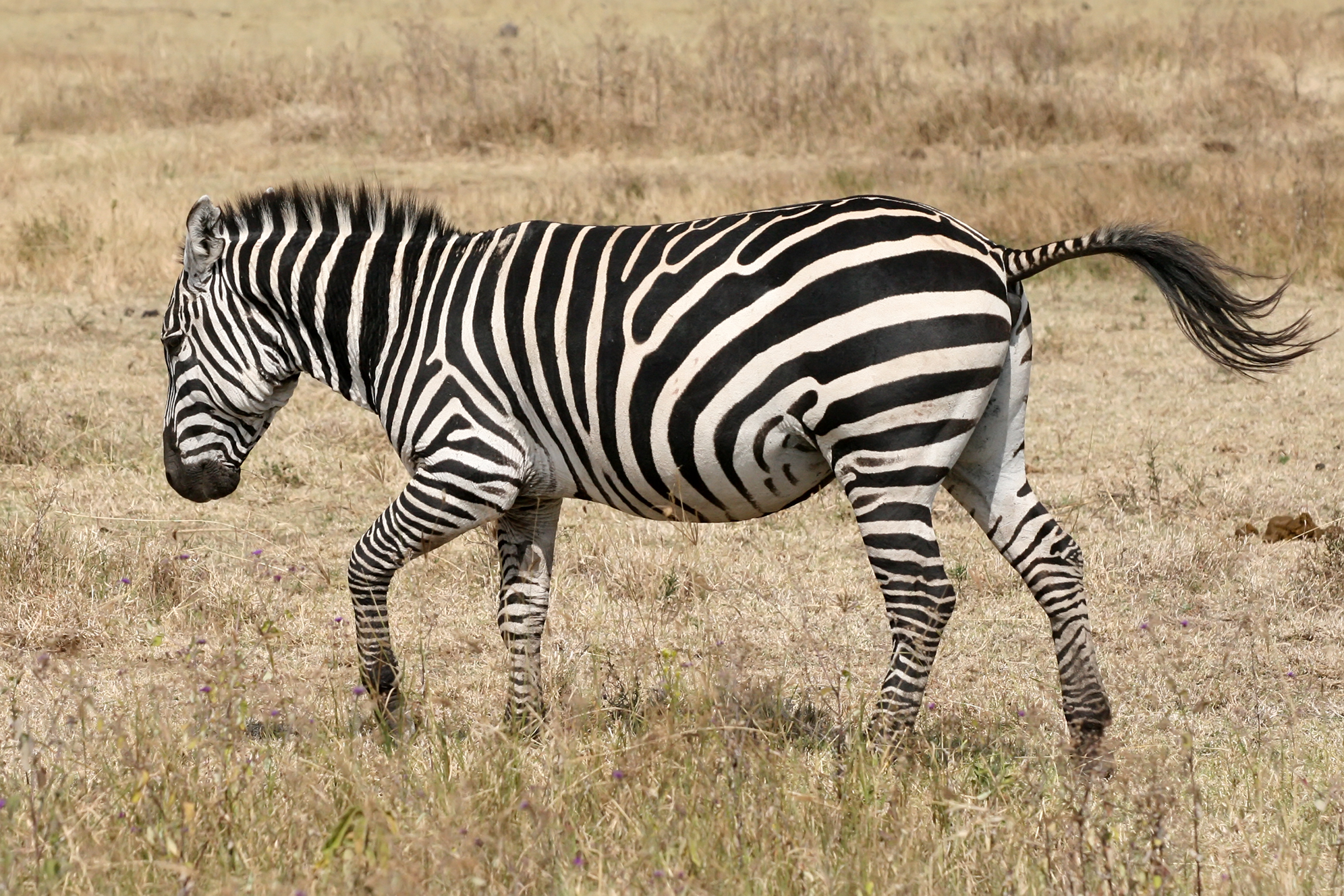
Zebras may have developed stripes to avoid biting flies.
Scientists from University of California, Davis systematically examined the function of zebra stripes. From their analyses, many long-standing, but previously unconfirmed hypotheses were rejected, and it is now believed that zebra stripes serve to avoid biting flies.
Prior to this research, there were five main functional hypotheses for the adaptation of zebra stripes: camouflage, heat management, social function, confusion of predators, and bug bite prevention. To test these hypotheses, the researchers looked at the seven surviving equid – horse family – species. Three equid species have prominent black and white stripes, the grey African wild ass has thin stripes on its lower legs, and three Asiatic equid species have no stripes.
The scientists then used this variation in striping among different species of wild equids to test the five factors proposed above. If the geographic range of striped species was significantly better matched with a factor than the geographic range of non-striped species, then that factor likely drove the evolution of striped coats in zebras.
Their results found no evidence supporting camouflage as the driving force of stripes in zebras. Stripes would camouflage zebras only in woodland environments, but zebras spend the majority of their time in open habitats.
They also found no evidence supporting heat management. Unstriped equids lived in hot areas just as well as striped equids. Instead both equids deal with the heat by seeking shade.
A social function was also rejected, as they found no significant association between striping and group size. It was previously believed that striping might be used for individual recognition in large groups of equids, but only one striped species operates in a large group. In contrast, all three of the non-striped species operate in large groups.
Stripes were believed to help zebras confuse predators by tricking them into misjudging their size or speed. However, it was found that lions actually capture zebras in significantly greater proportions to the zebras’ abundance. This suggests that stripes were not an anti-predator defense against lions.
On the contrary, spotted hyenas, a smaller predator than lions, capture fewer zebras than predicted by their relative abundance. As hyenas have a difficult time downing adult zebras because of their kicks, striping especially in the rump and leg may be a warning signal to hyenas and other smaller predators. However, a warning signal function of stripes cannot fully explain stripping in zebras, as non-striped zebras have small predators of their own. The warning signal function is likely a secondary benefit.
Caro’s team found significant correlation between the presence of stripes and tsetse fly and horse fly distributions. Striping as a way of avoiding biting flies is also supported by previous experiments that show that both these fly species avoid landing on black and white striped surfaces. They believe that the black and white stripes appear to the flies as inconspicuous patches of dark and light, because the flies, lacking lateral inhibition, cannot see the edges of the zebra when the edges are perpendicular to the stripes.
Zebras may have adapted stripes, because they are particularly susceptible to biting flies as a result of their short hair. By avoiding biting flies, zebras are less likely to contract the diseases that these flies carry and live on to spread their striped fur genes.
Caro and his team will continue their research to expand on why biting flies avoid striped surfaces.
References:
T. Caro et al, The Function of Zebra Stripes (1 April 2014). Available at http://www.nature.com/ncomms/2014/140401/ncomms4535/full/ncomms4535.html (11 April 2014).
Leave a Reply